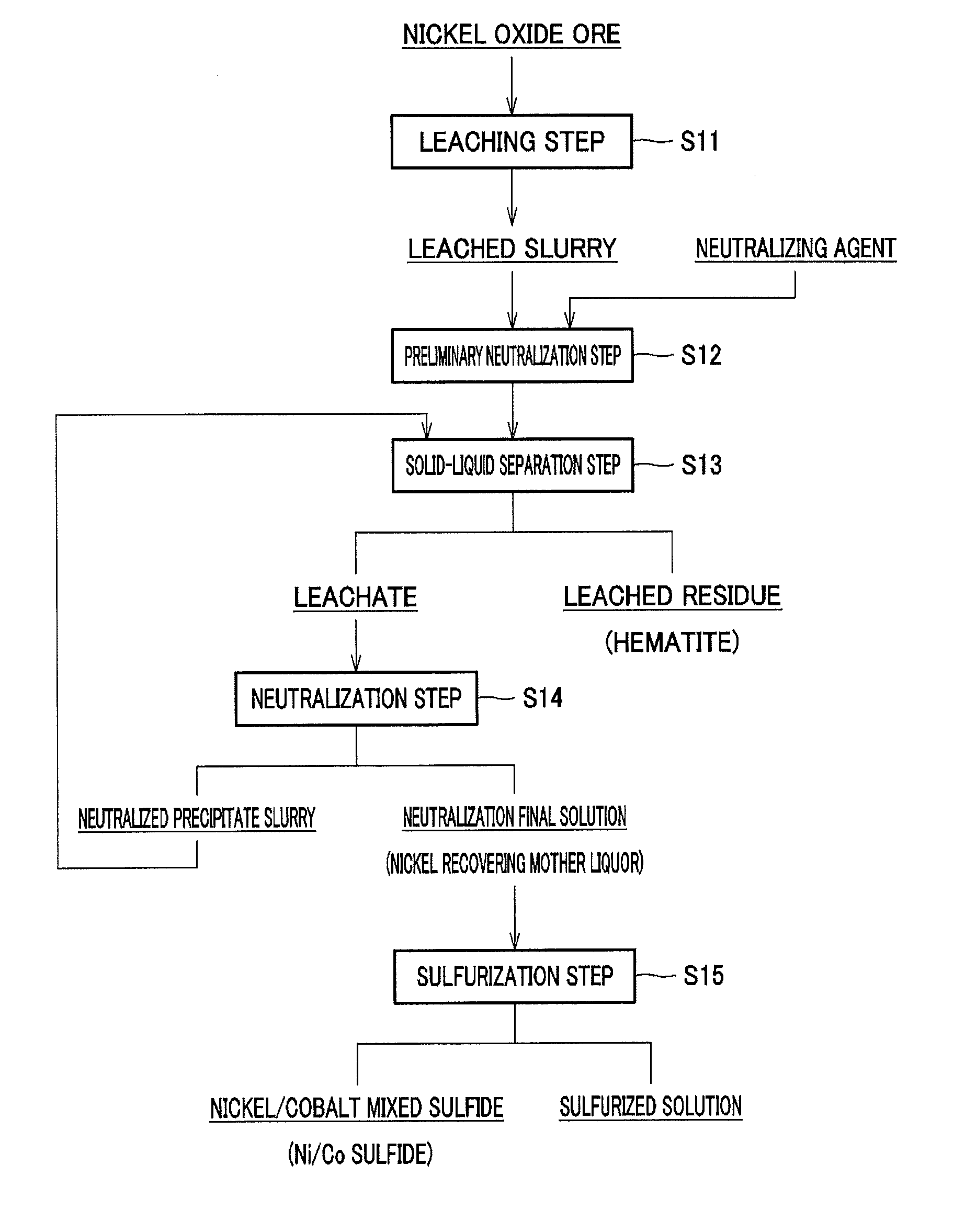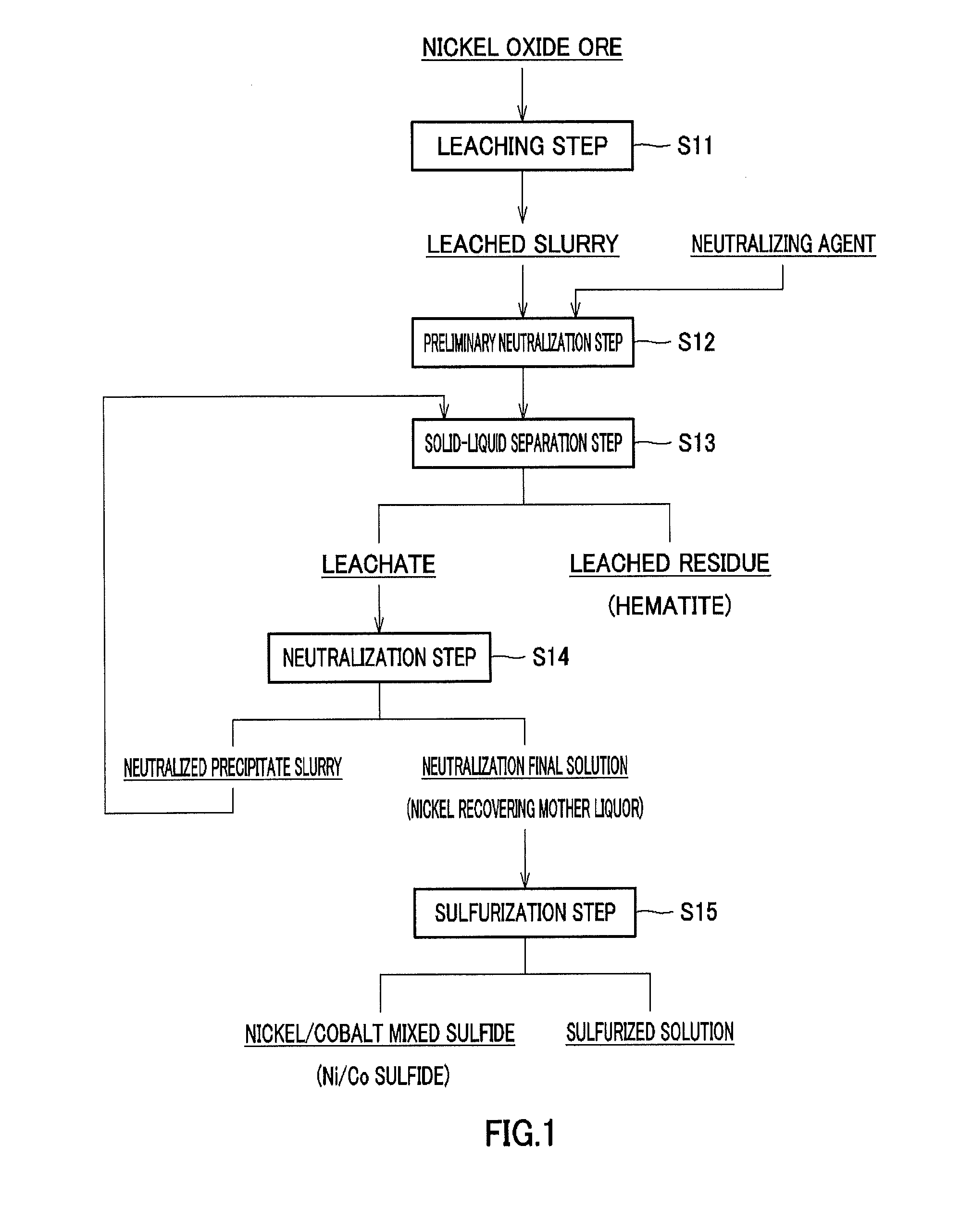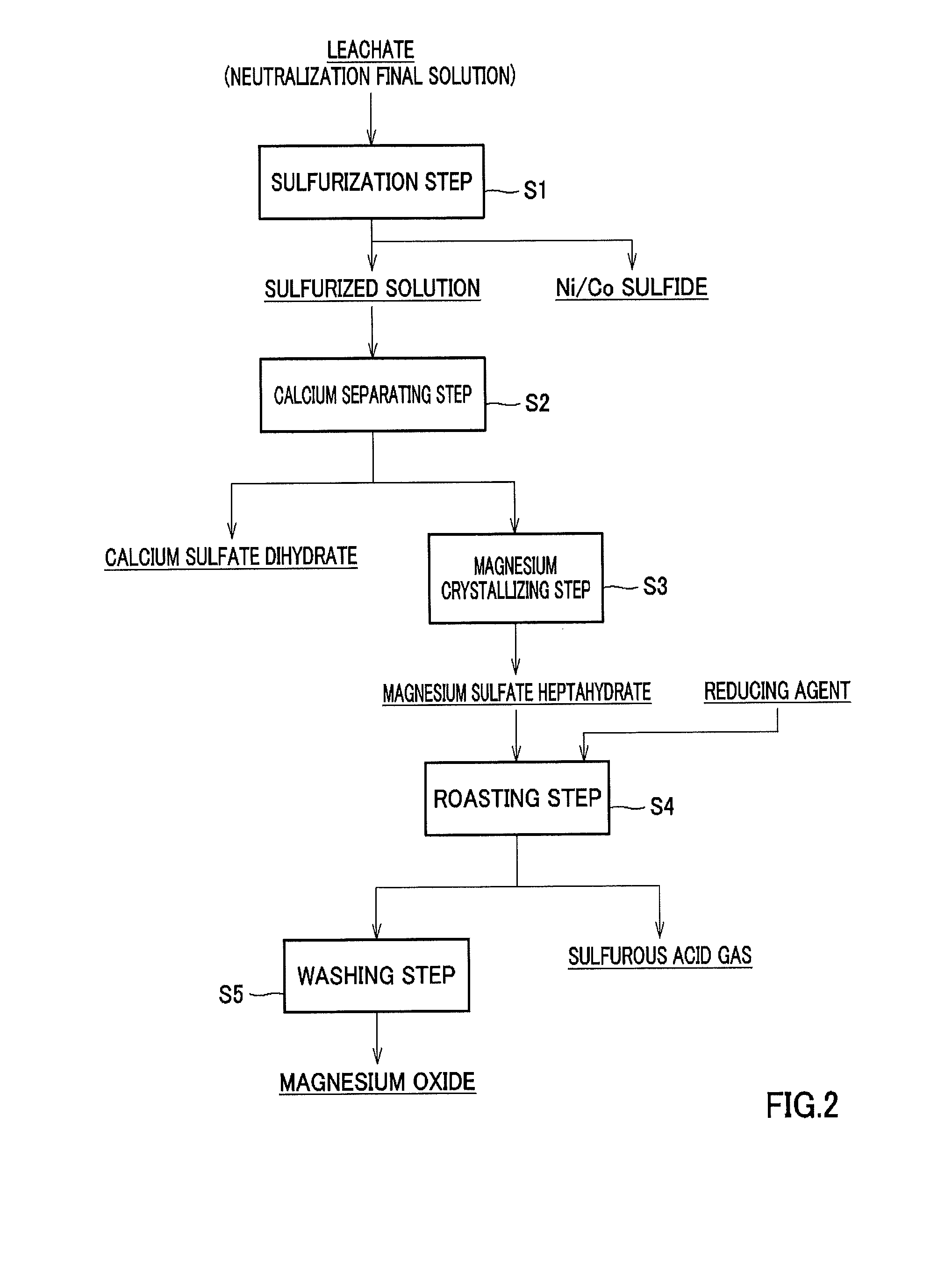Hematite manufacturing process and hematite manufactured by same
a technology of hematite and manufacturing process, which is applied in the direction of magnesia, iron sulfate, nickel compounds, etc., can solve the problems of large amount of leached residue generated with respect, unusable leached residue obtained in the hpal process, and unsuitable for ironmaking applications, so as to reduce the generation of residues and the effect of effective use of resources
- Summary
- Abstract
- Description
- Claims
- Application Information
AI Technical Summary
Benefits of technology
Problems solved by technology
Method used
Image
Examples
example 1
[0167]
[0168](Separation of Calcium Sulfate and Crystallization of Magnesium Sulfate)
[0169]Calcium sulfate dihydrate and magnesium sulfate heptahydrate were dissolved in pure water to prepare 300 ml of an aqueous solution adjusted so as to have a magnesium concentration of 25 g / L and a calcium concentration of 0.5 g / L. The solution was divided into three equal parts as samples 1 to 3, each of which was added in a beaker with a volume of 200 ml.
[0170]Next, a water bath kept at 70° C. was provided in a draft, and samples 1 to 3 were heated to evaporate water and concentrate the solution. Concentration of the solution was carried out by initially evaporating a moderate amount of water that did not cause precipitation of crystals with the solution held in the water bath at 70° C., and then naturally drying (evaporating) the solution while accurately measuring the evaporation amount with the solution held in the water bath and kept at 30° C. After the solution was held for 2 to 5 hours, c...
example 2
Production of Magnesium Oxide from Sulfurized Solution in HPAL Process
[0188]A 64 wt % sulfuric acid solution was added to and mixed with a nickel oxide ore having a nickel grade of 1% and an iron grade of 46 to 48%, in an amount of 275 Kg per 1 ton of the ore (275 [Kg / ore-t]), and the mixture was adjusted so as to form a slurry having a concentration of 30 to 40% by weight.
[0189]The mixed slurry was then introduced into a pressurizing apparatus, heated to 240 to 250° C. while being stirred, and then held for 3 hours, so that nickel in the ore was leached to form a leached slurry. Next, to the resulting leached slurry was added pure water in such a manner that the slurry had a volume equal to that before leaching.
[0190]Magnesium oxide having a sulfur grade of 0.66% after washing and obtained by natural drying in the process for producing magnesium oxide described above was added to the slurry to neutralize free sulfuric acid remaining in the leached slurry.
[0191]Then, using Nutsche a...
example 3
[0205]As in the roasting step in Example 1, crystals of magnesium sulfate heptahydrate separated from a solution prepared in the same manner as in Example 1 were divided into two parts, and added in two crucibles, respectively. Charcoal having the composition shown in Table 4 was added to these crucibles as a reducing agent in an amount of 0.025 mol and an amount of 0.05 mol, respectively, in terms of a carbon content, and the crucibles were heated to 1000° C. while air was blown into the crucibles at a rate of 2.5 liters per minute. Thereafter, the crucibles were held for 1 hour to be slowly cooled. The additive amounts of charcoal were amounts corresponding, respectively, to 1 equivalent and 2 equivalents of the requirement for reaction.
TABLE 4Analysis itemsWater content (%)9.0Ash content (%)1.9Fixed carbon (%)94Calcium (%)1.0Magnesium (%)0.3Manganese (%)Iron oxide (%)Potassium + Sodium (%)0.5Silicic acid (%)Phosphoric acid (%)0.1Others (carbonic acid etc.) (%)0.1
[0206]After cooli...
PUM
| Property | Measurement | Unit |
|---|---|---|
| concentration | aaaaa | aaaaa |
| temperature | aaaaa | aaaaa |
| specific gravity | aaaaa | aaaaa |
Abstract
Description
Claims
Application Information
 Login to View More
Login to View More - R&D
- Intellectual Property
- Life Sciences
- Materials
- Tech Scout
- Unparalleled Data Quality
- Higher Quality Content
- 60% Fewer Hallucinations
Browse by: Latest US Patents, China's latest patents, Technical Efficacy Thesaurus, Application Domain, Technology Topic, Popular Technical Reports.
© 2025 PatSnap. All rights reserved.Legal|Privacy policy|Modern Slavery Act Transparency Statement|Sitemap|About US| Contact US: help@patsnap.com



